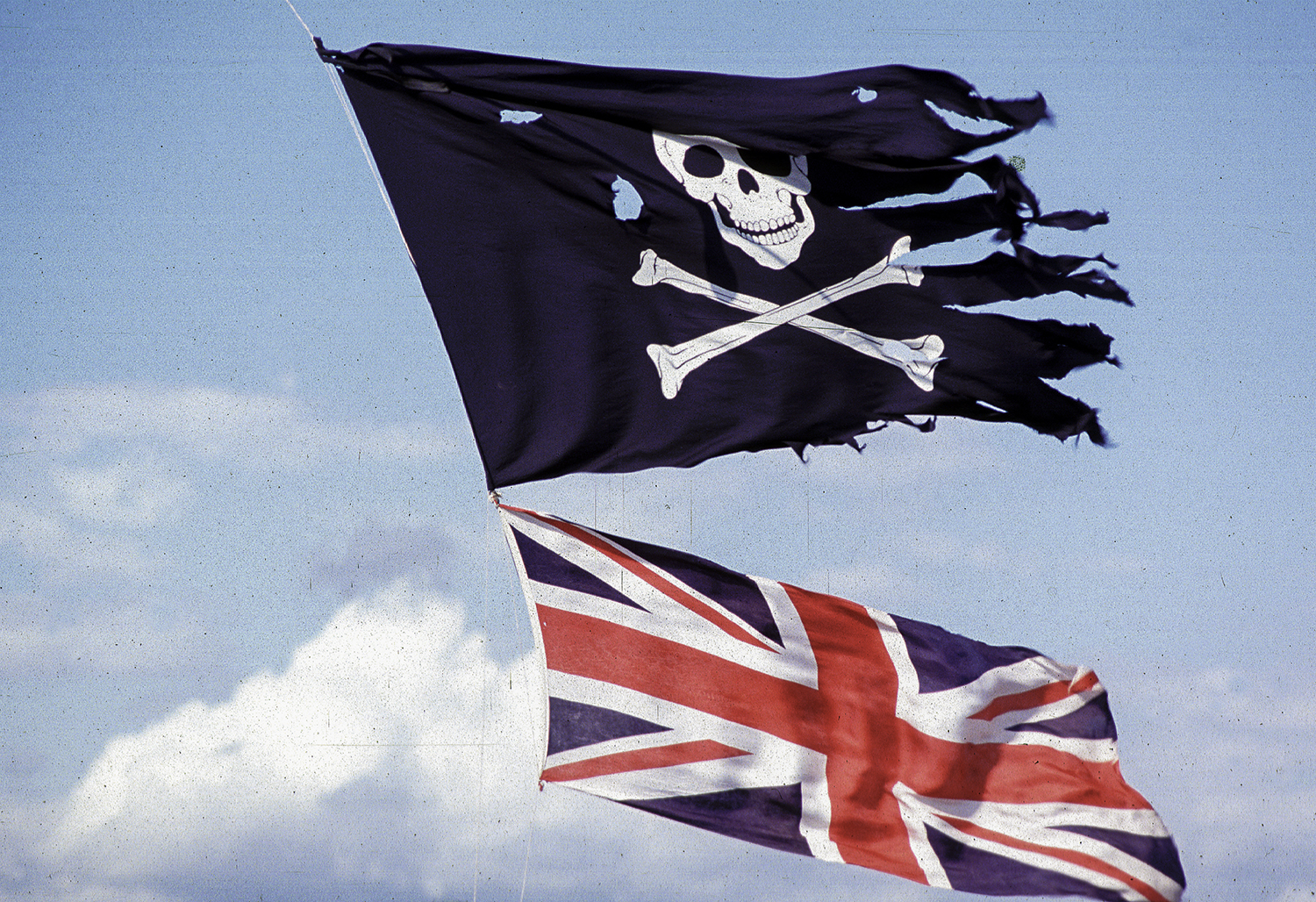The 1990s heard the rise of outlaw techno sound systems that fused party hedonism and political dissidence. Explore the legacy of rave culture.
Desert Storm sound system. Photo: Alan Lodge
Sound Matters: Innovators
Portable Revolutions
The anarchic sound-system collectives that took to the roads of rural Britain in the early 1990s staged a series of spectacular outlaw raves before the authorities launched a crackdown. But some of them relocated to mainland Europe and established a whole new anti-establishment party culture that is still flourishing all over the continent, with a soundtrack that they created for themselves.
By Matthew Collin
Stay up forever
Acid house and the rave scene inspired a spectacular outbreak of chemically-enhanced hedonism across Britain in the late 1980s, but it also attracted people who saw it as a countercultural way of life, not just a bit of weekend lunacy. They drew inspiration from the do-it-yourself ethos of rave, post-punk and hip-hop, but became disillusioned with the venal and unscrupulous promoters who came to dominate the rave circuit. When the early house and techno sound system collectives started to throw parties at the Glastonbury festival, on hippie travellers’ sites and in the inner-city squatlands of Britain’s major cities, they began to make common cause with an older generation of non-conformists who had been politicised by years of police suppression, and a new renegade alliance was forged. Sound-system crews like Nottingham’s DiY, who started to stage free raves in fields and forests across the English countryside, and Tonka, who went from throwing parties in a disused bicycle shop in Cambridge to organising post-club revelries on Brighton beach, began to map out new and subversive possibilities for dance culture.
Breach the peace
The most notoriously seditious of the techno sound systems was Spiral Tribe. With their uniform shaven heads, black combat fatigues and mutinous make-some-fucking-noise attitude, they looked and sounded like techno insurgents. While DiY and Tonka preferred a more funkily hypnotic style of house music, Spiral Tribe’s sound could be described by one of their slogans – “on top, non-stop”. They also believed in absolute commitment: “The unspoken rule or initiation with Spiral Tribe was that you had to live it, 24 hours a day,” said their charismatic ideologue Mark Harrison. In the summer of 1991, they trucked their rig around rural England, playing non-stop for days and nights on end at free parties that attracted increasing numbers of ravers who were similarly disenchanted with the commercialisation of rave culture. The free-party scene peaked at Castlemorton Common in Worcestershire in May 1992, when more than 25,000 people converged for a monumental week-long illegal extravaganza soundtracked around the clock by sound systems like Spiral Tribe, DiY, Bedlam and Circus Warp. The marathon party sparked a nationwide moral panic, with outraged MPs asking questions in parliament and ministers promising to legislate to ensure that it never happened again. As the last ravers left the common, the police swooped to seize what they thought were the ringleaders, and several Spiral Tribe members were charged with conspiracy to cause a public nuisance.
““Wherever we went, we left a little scene...””
Reclaim the streets
Britain’s Conservative government first adopted legislation intended to thwart the illegal rave scene in 1990, but the Criminal Justice and Public Order Act of 1994 – partly inspired by the cacophonous festivities at Castlemorton Common – went further, targeting the music played at outdoor parties. It prohibited, when played in certain circumstances, “sounds wholly or predominantly characterised by the emission of a succession of repetitive beats”. Tens of thousands joined mass demonstrations against the legislation, with sound-system trucks dodging police cordons to turn London’s Trafalgar Square into an impromptu rave, but failed to stop it. This provoked the increasing politicisation of the scene, with crews like Desert Storm providing the entertainment for demonstrations like Reclaim the Streets, a series of anti-roadbuilding protest-parties that occupied stretches of motorway and major traffic intersections. Although the era of large-scale festival-raves was effectively ended by the Criminal Justice Act, crews like DiY and Smokescreen continued to do illegal events, although they maintained a lower profile, while the likes of Liberator and Virus kept the grungey acid-techno spirit alive in squatted warehouses around London.
On top, non-stop
Spiral Tribe were ultimately acquitted of the Castlemorton conspiracy charges, but they had already left the country, believing it was no longer possible to operate freely in Britain any more. They organised their first Teknival, as they called it, in France in 1993, then moved on to the Czech Republic the following year, where hundreds came to dance in a remote field against an apocalyptic sculptural backdrop of decommissioned Soviet MiG fighters and other discarded Red Army hardware. As the Spirals moved on through Europe, staging Teknivals as they went, hardcore sound-system crews started to emerge all over the continent, emulating the British crew’s style and attitude. “Wherever we went, we left a little scene,” Tribe member Sebastian Vaughan recalled. But the Teknivals’ popularity brought the sonic anarchists back into conflict with the law. In France, which became the heartland of the outlaw scene, legislation was adopted in 2002 to give the authorities more powers to stop illegal raves, while in the Czech Republic in 2005, a Teknival was raided by hundreds of police armed with tear gas and water cannon, causing a riot which left scores of people injured.
The Desert Storm sound system in Bosnia. Photo: Adrian Fisk
Crystal distortion
The sound systems also started to make their own music to soundtrack their parties. DiY’s record label Strictly 4 Groovers offered a fluid British reinterpretation of underground American house and garage, while London squat collective Liberator produced hardline acid tracks for their defiantly-named Stay Up Forever label. The Teknival crews developed their own musical style – grimy, low-tech productions which took influences from dystopian hardcore classics like 4Hero’s “Mr. Kirk’s Nightmare” and Aphex Twin’s “Didgeridoo”, from the belligerent 180BPM sonic assault of Dutch gabba, and from the ascetic starkness of techno labels like Underground Resistance. This harsh, jittery and sometimes sinister sound with its punishing martial kickdrum was calibrated for maximum disorientation of the senses amid the intoxicated frenzy of a Teknival. Some of the releases from Spiral Tribe’s Network 23 label, made by crew members under aliases like SP23, 69db and Crystal Distortion, were even recorded on the road, in a mobile studio mounted in a circus showman’s trailer. There were also crews that specialised in live improvisation with relentlessly savage acid-techno sets running from day into night and all the way back into the light again.
Storming sarajevo
The most audacious and riskiest sound system missions in the 1990s were Desert Storm’s multiple sorties to Bosnia and Herzegovina, when they transported humanitarian aid supplies and threw parties in war-ravaged towns like Sarajevo, Tuzla and Mostar before and after the ceasefire. In Tuzla, they were once surrounded by soldiers brandishing Kalashnikovs and feared the worst, but it turned out that the troops had been dispatched to tell them to turn the music up, and then proceeded to add some genuine firepower to the mix by letting loose volleys of gunshots into the air in time to the beat. Another crew who took their mission one step further were Exodus, who used their rave profits to turn squatted buildings into informal community centres and housing co-operatives in their hometown Luton. Their HAZ Manor commune managed to hold out for over a decade despite a series of raids, arrests and threats of eviction. “We see ourselves as freedom fighters,” explained Exodus spokesman Glenn Jenkins.
Photo: Alan Lodge






